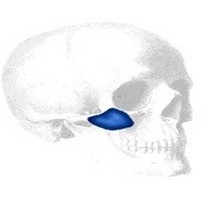One of the common facial aging changes for some people is the loss of fullness in the middle of the face and a longer distance between the height of the lower eyelid and the prominence of the cheek. This is most apparent when you look in the mirror and notice a flattening of the cheek area and a hollowed out look around your eyes. This occurs as the soft tissue of the cheeks, much like the jowls and neck skin, goes south due to gravity and skin loosening. The specific anatomic reason is that the ligaments that attach the skin to the bone weakens or stretches out and the skin that is stretched out over the cheek bone falls. This can also appears as folds or festoons of skin that hang down from the lower eyelid to below the cheek.

This relatively simple surgery gives a notable richness to the face resulting in a more rejuvenated look. The face also seems to age better after cheek augmentation as the implant helps lessen the potential for future sagging. Cheek enhancement can be done at the same time as a facelift, resulting in a dual change that can be more significant.
In the use of cheek implants in the aging face, it is common to see it overdone. Too much cheek enhancement can look unnatural and be apparent that something was done. A subtle change is more natural and less obvious. Cheek implants come in a variety of sizes and shapes and it is far better to use a small or the smallest size. Because it is done on both cheeks, the after surgery effect can be more than one would expect. Unlike the naturally deficient (underdeveloped) cheek patient, who usually needs a bigger size, the aging face does not usually have a bone deficiency but a much thinner soft tissue prolapse.
Dr. Barry Eppley
Indianapolis, Indiana


